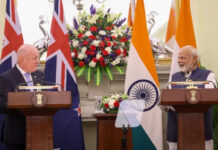Last week I was delighted to announce a further 41 urban cycleways projects in 15 centres across New Zealand will be funded through our $333 million urban cycleways programme. This is the single biggest investment in cycling in New Zealand’s history and brings the total number of urban cycleway projects being undertaken to 54. This programme will make cycling a safer, more attractive transport choice for thousands of people around the country.
New Zealand’s three main urban centres of Auckland, Wellington, and Christchurch will receive a total investment of $208.7 million towards projects in those cities. There is also funding for projects in several provincial centres including Whangarei, Hamilton, Tauranga/Western Bay, Rotorua, Gisborne, Hastings/Napier, New Plymouth, Wanganui, Palmerston North, Blenheim, Nelson and Dunedin. Transport Minister Simon Bridges…… opened the first completed urban cycleway – the Longburn Shared Pathway in Palmerston North – last week. The rest of the projects are expected to be completed over the course of the next three years.
The programme brings together funding from a range of different sources. The Government’s $100 million urban cycleways fund has helped to generate the overall investment of $333 million in cycling; getting projects underway much sooner than may otherwise have been the case. These urban cycleways are in addition to the New Zealand Cycle Trail project, which has seen more than 2,500km of tracks built so far all around New Zealand, and is helping to attract more tourists, create jobs, and boost economic growth in the regions.
Tourism is incredibly important to our economy; it contributes around 7 per cent to our GDP and is a major employer of New Zealanders. The importance of tourism is why the Government has invested $600 million into promoting ourselves to the world and this investment is getting results. More people are coming to New Zealand, staying longer and spending more and that is expected to continue to grow. Last year 2.95 million people visited New Zealand and international visitor spending is expected to increase by nearly 50 per cent over the next six years – to $11.1 billion.










